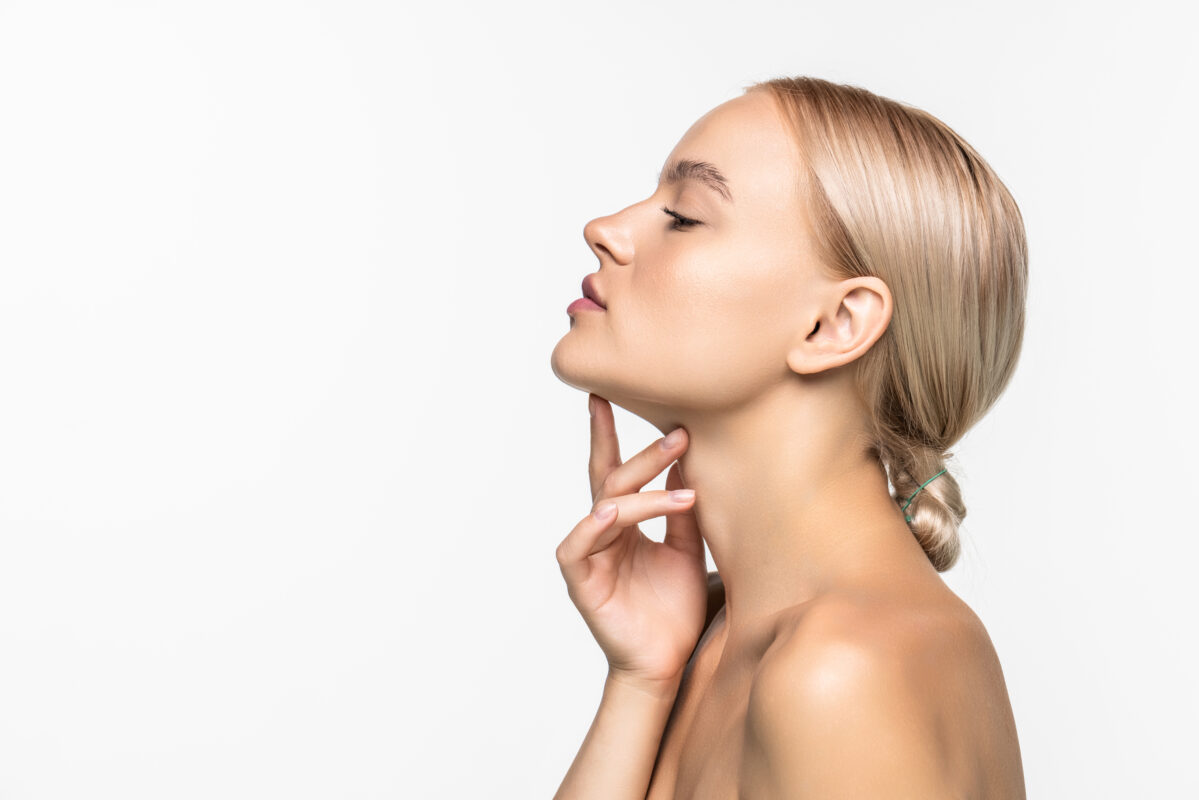Healthy, glowing skin starts with proper hydration. Whether you struggle with dry patches, oily skin, or just want to maintain a smooth, radiant complexion, a solid skincare routine focusing on hydration is essential. The benefits of hydration go beyond just moisturizing your skin—it helps improve texture, fight signs of aging, and promote a youthful, glowing appearance. With a few easy-to-follow steps and the right ingredients, you can boost your skin’s hydration in just 10 to 15 minutes. In this guide, we’ll show you how to incorporate hydrating skincare into your daily routine, along with pro tips for enhancing its effectiveness.
Key Hydration Benefits
A hydrating skincare routine offers multiple benefits that cater to a variety of skin needs:
- Deep Hydration: The main benefit of a hydrating routine is to restore moisture to your skin. Skin that’s properly hydrated looks plump, smooth, and vibrant.
- Anti-Aging: Hydrated skin is less prone to showing signs of aging like wrinkles, fine lines, and dullness. Moisture keeps the skin barrier intact, helping to prevent sagging and other age-related concerns.
- Brightening: Hydration helps to even out your skin tone, reducing the appearance of dark spots and creating a natural, healthy glow.
- Improved Texture: Regular hydration helps keep your skin smooth and balanced, preventing rough patches, flaky skin, or areas that feel tight.
Whether you’re preparing for an important event, a day at the office, or simply want to pamper yourself, this hydrating beauty routine is designed to bring immediate results for a fresh, glowing complexion.
Tools Needed for Hydration
The effectiveness of your beauty routine hinges on the ingredients you choose. Hydration requires specific components that not only replenish moisture but also lock it in, so your skin stays hydrated for longer. Below are the must-have ingredients and tools for your hydrating skincare routine.
Key Ingredients:
- Hyaluronic Acid:
Hyaluronic acid is a powerhouse ingredient when it comes to hydration. It can hold up to 1000 times its weight in water, making it one of the most effective hydrating ingredients for all skin types. It draws moisture into the skin and helps retain it, leaving your face plump and smooth. When choosing a hyaluronic acid serum, look for one with a low molecular weight to ensure deeper penetration into the skin. - Retinol (For Nighttime Use):
Retinol, also known as Vitamin A, is a key ingredient in any anti-aging routine. It helps speed up cell turnover, which results in smoother skin, fewer fine lines, and a reduction in the appearance of dark spots. While retinol isn’t typically used for hydration, its role in rejuvenating the skin and improving texture can complement your hydration routine, especially in the evening. Use a retinol product only at night, as it can make your skin more sensitive to sunlight. - Vitamin C:
Vitamin C is an antioxidant that protects your skin from free radicals, such as pollution and UV damage. It also brightens the skin and helps even out your skin tone. When applied daily, Vitamin C can boost the overall appearance of your complexion, giving it a healthy and glowing look. - Moisturizer:
A quality moisturizer with nourishing ingredients like jojoba oil, avocado oil, or shea butter helps seal in moisture and restore the skin’s natural barrier. For dry skin, opt for a thicker, richer formula, whereas lighter formulations are best for oily skin. - Peptides:
Peptides are small proteins that help rebuild the skin’s structure by promoting collagen production. They also assist in moisture retention and enhance the skin’s elasticity, making them an excellent addition to any hydrating routine.
Essential Tools:
- Facial Roller:
A facial roller, often made from jade or rose quartz, can enhance the absorption of your skincare products. It also helps with lymphatic drainage, reducing puffiness and promoting blood circulation in your face. You can use the roller after applying your serums to encourage the products to penetrate deeper into the skin. - Cleansing Brush:
A cleansing brush, either manual or electronic, ensures that your face is completely clean before you apply your skincare products. This is important because any dirt, oil, or makeup left on the skin can interfere with the absorption of your hydrating products. Use the brush to gently exfoliate the skin as well, ensuring that dead skin cells are removed, leaving your face smooth and ready for moisture.
Step-by-Step Hydration Instructions
Hydrating your skin doesn’t have to be a complicated process. By following these simple steps, you’ll be able to achieve a healthy, glowing complexion in less than 20 minutes.
Step 1: Cleanse Your Skin
Start by cleansing your face with a gentle, hydrating cleanser. Make sure to choose a cleanser that doesn’t strip your skin of its natural oils. Use a cleansing brush for an extra deep clean and to remove any dirt, oil, or makeup. Cleansing is essential, as it allows your skin to absorb the hydrating ingredients more effectively.
- Tip: Choose a cream-based or gel cleanser if you have dry skin. If you have oily skin, a foaming or gel-based cleanser will work best. Look for ingredients like aloe vera or chamomile for a soothing cleanse.
Step 2: Apply a Hydrating Toner
If you use a toner in your skincare routine, apply it after cleansing. A hydrating toner helps balance the pH of your skin and prepares it for the next steps. Look for toners that contain ingredients like rose water, aloe vera, or glycerin. These ingredients hydrate and calm the skin, ensuring a smoother application of serums and moisturizers.
- Tip: Toner is optional, but it can make a big difference for skin that’s sensitive or prone to redness.
Step 3: Apply Hyaluronic Acid Serum
After cleansing and toning, apply a hyaluronic acid serum to your damp skin. This step will draw moisture into the skin, leaving it feeling hydrated and plump. Gently press the serum into your face using your fingertips. Make sure your face is slightly damp, as hyaluronic acid works best when it can draw water from the air and your skin’s surface.
- Tip: If you live in a dry climate, consider using a hydrating mist before applying hyaluronic acid to ensure that your skin remains damp during application.
Step 4: Apply Retinol (Nighttime Only)
If you’re doing this routine in the evening, apply a pea-sized amount of retinol serum. Be careful with retinol—it can cause irritation if used in excess. Gently massage the retinol into your face, focusing on areas where wrinkles and fine lines are more prominent.
- Tip: Always use retinol at night and follow up with a broad-spectrum sunscreen the next morning, as retinol makes your skin more sensitive to UV rays.
Step 5: Brighten Your Skin with Vitamin C
After applying retinol (or if you’re not using it), apply a Vitamin C serum. Vitamin C is known for its brightening properties, and it also protects your skin from environmental damage. Gently pat the serum into your skin and let it absorb before applying the next step.
- Tip: Vitamin C can be a bit irritating for sensitive skin. If that’s the case for you, try a milder form like ascorbic acid or start with a lower concentration.
Step 6: Lock in Moisture with a Nourishing Moisturizer
Finish your routine by applying a rich moisturizer to seal in all the hydration. Choose a moisturizer based on your skin type—oily skin can benefit from a lightweight, gel-based moisturizer, while dry skin may need something heavier, like a cream with rich oils.
- Tip: If you have acne-prone skin, look for a non-comedogenic moisturizer that won’t clog your pores.
Step 7: Facial Roller (Optional)
For an added boost, use a facial roller to massage the products into your skin. Gently roll the tool across your face, starting from the center and moving outward. This helps stimulate circulation and ensures that your skin fully absorbs the products you’ve applied.
- Tip: Store your facial roller in the fridge for an extra cooling effect that can reduce puffiness and calm inflammation.
Pro Tips and Hydration Variations
- Hydrating Masks: For an extra hydration boost, use a hydrating sheet mask or overnight hydrating mask once or twice a week. These masks are packed with moisture and nutrients to rejuvenate your skin quickly.
- Layering Products: Remember to apply products in order from thinnest to thickest. Always start with serums (hyaluronic acid, Vitamin C) and finish with moisturizers.
- Customize for Your Skin Type: If you have oily skin, you may want to skip heavier oils and stick to light, gel-based moisturizers. For dry skin, incorporate richer formulas that provide a deep moisture surge.
Aftercare Recommendations
- Daily Use: For the best results, incorporate this routine into your daily skincare regimen. Use it both in the morning (without retinol) and at night (with retinol) for maximum hydration and anti-aging effects.
- SPF Protection: If you’re using retinol, never forget to apply sunscreen the following day. Retinol can make your skin more sensitive to sunlight, which increases the risk of sunburn and damage.
- Hydration Boost: If your skin is particularly dry or in need of extra moisture, consider applying a hydrating mask once a week to give it a deep, nourishing treatment.
Conclusion
A hydration-focused beauty routine is vital for maintaining healthy, glowing skin. It helps combat dryness, reduces the appearance of fine lines, and enhances your natural radiance. Ingredients like hyaluronic acid, Vitamin C, and retinol are key players in keeping your skin smooth and youthful.
By sticking to this routine, you will see improvements in your skin’s hydration and texture. Consistency is crucial, so make this practice a daily habit for the best results.
It’s important to pay attention to your skin’s individual needs. Whether your skin is dry, oily, or sensitive, you can adapt these steps to create a routine tailored to your skin type.
Give your skin the care and hydration it deserves. With regular attention and the right products, you’ll enjoy a fresh, radiant complexion that feels nourished and revitalized. Your skin will thank you.






